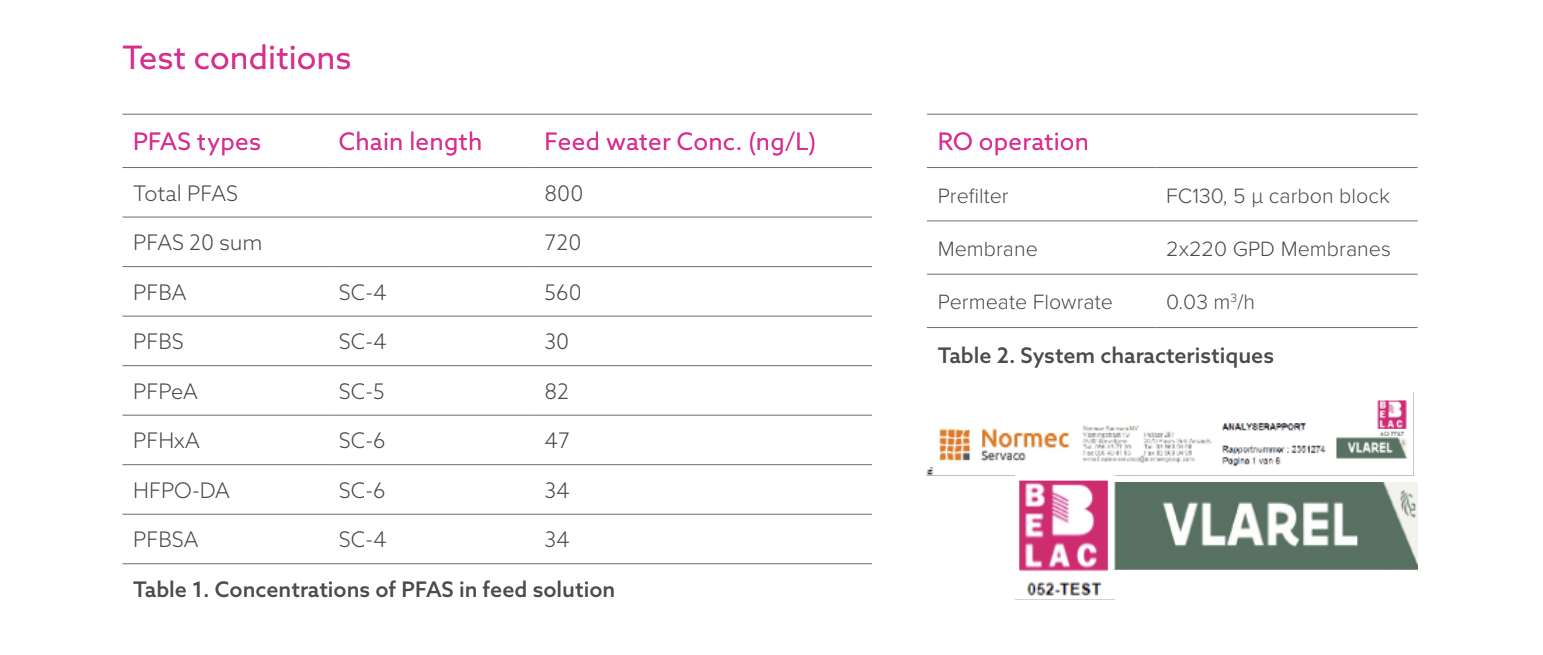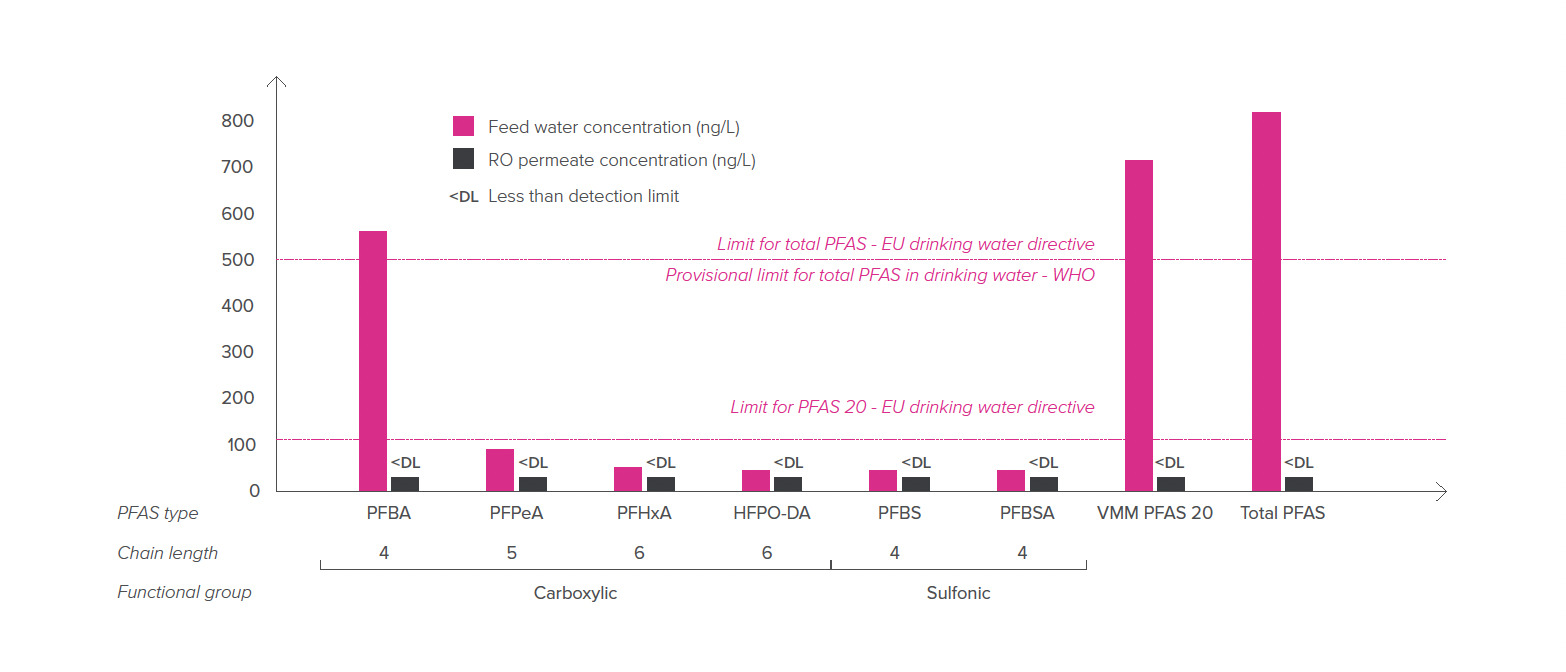PFAS removal using Vision Water RO
PFAS, which stands for Per/Poly Fluoroalkyl Substances, are synthetic compounds that have seen extensive use in industrial and commercial settings for numerous decades. Nonetheless, due to their robust chemical composition, breaking them down is a challenging task, leading to their long-lasting presence in both the environment and the human body. Ingesting drinking water contaminated with PFAS can lead to detrimental health effects, including developmental problems, disruptions in hormone function, and an elevated risk of certain types of cancer. The European drinking water directive suggests a limit value of 100 ng/L for SUM PFAS 20 as well as a limit of 500 ng/L for Total PFAS concentration.
Considering the importance of removing PFAS from drinking water, the Pollet water group investigated the removal of PFAS from water using the Vision Water Reverse Osmosis device.

The investigation utilized a standard Vision Water RO device comprising a pre-filtration and a RO-membrane component. Tap water spiked with a total PFAS concentration of 800 ng/L and PFAS 20 concentration of 720 ng/L were used as the feed solution, simulating a worst-case scenario. After the filtration test, the feed and permeate samples were analyzed at an external laboratory using the Liquid chromatography- Tandem Mass Spectrometry method following the standards (WAC/IV/A/025) accredited by the Energy and environmental information system for the Flemish Region (EMIS), Flemish regulations on environmental recognitions (VLAREL) and Belgian accreditation body (BELAC).
Test conditions

Results
When tested with an extreme initial PFAS concentration, the RO system was successful in reducing the total PFAS and SUM PFAS20 concentration below the acceptable limit of 500 and 100 ng/L (EU drinking water directive 2020), respectively. It should be noted that they were removed to a level lower than the detection limit (<20 ng/L), at least exceeding 97% removal. The RO system was able to remove the challenging short-chain PFBA, which are difficult to remove with other treatment techniques, below the detection limit, exhibiting a removal exceeding 97%. The domestic RO system is anticipated to effectively remove longer-chain PFAS, similar to or even better than it does with short-chain PFAS. As a result, it can be affirmed that the Vision Water RO system is a suitable choice for removing PFAS from drinking water, ensuring it meets the current safe limits.







